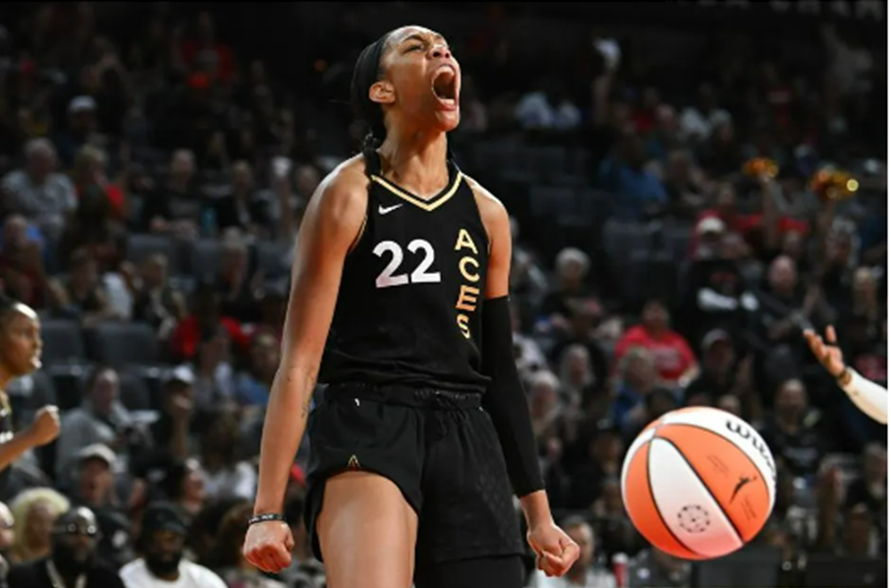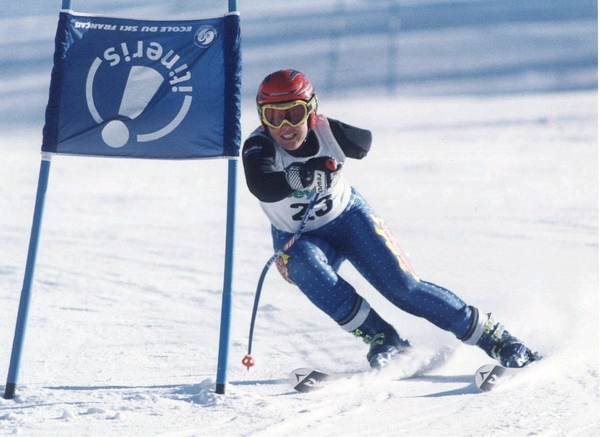Strategies To Elevate And Diversify Women’s Sports Coverage: Insights From The Gist

In light of the controversy surrounding the surge in biased and at times inaccurate media coverage of the WNBA this season, coupled with the absence of high-profile women’s sports media experts, the need to elevate and diversify sports media has reached a critical tipping point. Coverage of women's teams, athletes, and events remains significantly lower than that of their men counterparts, and women and diverse voices are still severely underrepresented in media roles, especially leadership positions. A report out of the University of Central Florida (UCF) estimated that only 14.4% of professional sports reporters across 100 nationwide outlets were women. From a leadership perspective, that same study estimated that only 16.7% of editors at those same outlets were women.
According to the lead author of the report, Dr. Richard Lapchick, there were slight increases in the proportions of women in sports media from 2018 to 2021, but “the overall record of the sports media for having women in prominent positions remains terrible.” Overall, the study found notable increases in the proportions of women in various sports media roles: sports editors rose from 10.0 percent to 16.7 percent, reporters from 11.5 percent to 14.4 percent, and copy editors from 20.4 percent to 24.7 percent. Columnists also saw a slight increase, from 16.6 percent to 17.8 percent. Despite these gains, the coverage of women’s sports remains disproportionately low, accounting for only 5-15% of content on linear and streaming platforms.
This lack of representation creates a vicious cycle: fewer diverse voices in decision-making roles leads to less investment in and training for women’s sports media experts, perpetuating the disparity in coverage. That being said, innovative organizations are leading the charge to shift this current status, and women-led sport media organizations such as The Gist, seek to fill some of these much needed gaps.
Underrepresentation of Women in Sports Media
Women are underrepresented in sports media for several reasons, including systemic gender biases and historical exclusion from the field. Historically, sports journalism has been a men-dominated industry, with deeply entrenched stereotypes that position sports as an interest and career path largely designed for and by men. According to previous research, sports media has long perpetuated narratives that marginalize women's sports and minimize their importance, which in turn influences hiring practices and opportunities for women in sports journalism. The result is a lack of women role models and mentors in the industry, making it challenging for aspiring women sports journalists to navigate their careers.
Additionally, structural barriers and workplace cultures often hinder women's advancement in sports media. Researchers further note that women in sports journalism frequently encounter a "chilly climate," where their presence and contributions are undervalued compared to their men counterparts. This environment can lead to higher attrition rates among women, as they may leave the industry due to a lack of support, mentorship, and advancement opportunities. Further, because women's sports receive significantly less coverage than men's, this feeds into a system of limited opportunities for women journalists to cover high-profile events across sporting spaces, also limiting their ability to advance their careers. For those reasons, addressing these issues requires an intentional effort to challenge and change the institutional biases and cultural norms that perpetuate gender disparity in sports media.
Elevating Women’ Sport Coverage
The video player is currently playing an ad. You can skip the ad in 5 sec with a mouse or keyboardSkip AdDespite the current underrepresentation of women working in sports media, trailblazing organizations such as The Gist are leading new efforts to transform the current landscape. Ellen Hyslop, Co-Founder and Head of Content for The Gist, described that their organizations mission is to level the playing field in the men-dominated sports industry.
According to Hyslop, “A big part of why we wanted to start at The Gist was to actually prove a different business model in the sports industry, and one that was centered on different types of fans, different types of creators, different types of athletes than what traditional sports media was doing, especially because it was such a male dominated space in place.” Overall, The Gist is approaching sports media differently, and they’re focused on designing a model that is more inclusive to both journalists and fans. Hyslop emphasized that The Gist’s mission centers on three key areas:
- A welcoming environment and community: “focused on including a different type of fan into the sports conversation, whether that means that they're more everyday fans, whether it's women, whether it's the LGBTQIA+ community, the BIPOC community, what have you, really creating a safe space for underserved sports fans to be able to feel like they finally have the choice to be involved in the sports conversation and having news catered to them so that they feel empowered and want to be a part of the sports community.”
- Driving a representative sports media marketplace: “only 14% of sports journalists are women or non binary folks, I think that that number has adjusted to 18% over the last couple of years since we started. And when we saw that, we said, okay, it's no wonder why so many people from those exact communities feel like they're left out of the sports conversation looking in, because when you look at who is the creators of so much of that content, they just kind of lack of perspective on the sports industry. So we really wanted to create a space for more women in the sports industry period.”
- Elevating the coverage of women’s sports: “we really wanted to level the playing field by providing equal coverage of men's and women's sports. And we were really intentional of not separating out women's sports to men's sports, because we truly feel like to see real equity. In all of those three spaces, you have to put men's and women's sports on the same pedestal. And on same platform, you have to put those female journalists who are hiring, you have to have them as authorities in men's sports, and you have to have them as authority in women's sports.”
- Unbiased Women’s Sport Coverage
Diversifying the workforce in women’s sports media is essential not only for increasing the volume of coverage but also for enhancing its quality. Research indicates that diverse organizations across various industries experience numerous benefits, including improved work quality, better decision-making, higher team satisfaction, and greater equity. The sports media industry stands to gain similarly by prioritizing diversity and investing in diverse voices, leading to insightful and more comprehensive coverage.
In light of recent controversies involving sports reporters who primarily cover men's leagues and teams, the urgency to diversify and elevate women’s sports media experts has become increasingly evident. Incidents such as Indy Star reporter Gregg Doyel making inappropriate comments to WNBA rookie Caitlin Clark, and ESPN reporter Pat McAfee referring to Clark using a derogatory term, highlight the issues that arise when diverse voices are not adequately represented in this space. According to Hyslop, organizations such as The Gist can help to create this change.
Hyslop stated that “some people really underestimate women's sports and underestimate getting into it. And I think that there's a lot of this rhetoric of, ‘oh, I cover the NHL, I could cover the PWHL’ or, ‘Oh, I covered the NBA. So I have no problem covering the WNBA.’ And the fact of the matter is, these are different games. They are different players, they have different rules, there's a completely different setup. And there's a lot of different history and context for all of them, too. And so I think a lot of it is finding those people who are willing and able to kind of put their ego aside and who want to learn and who want to do the training.”
Consistently engaging with women’s leagues, teams, events, and athletes, along with investing in media experts who excel in covering women’s sports, is crucial for changing this narrative. To assist further, Hyslop strongly believes that The Gist can be a great resource for professionals across the sports media industry.
“I would love for [sports media professionals] to subscribe to or to check out our website, because that's also really what [The Gist] is here for. Explaining [aspects of women’s sport such as] how long a season goes on for who are the key players? What are the key storylines, how it all works? Why does it matter? What's the context? I do think that people are willing to do and put in that effort on the men’s sport side, we have an analyst for every single team. And so people we know are willing to put in the work. It's just are they willing to put in the work on the women's side to learn all this history, all this context, develop those relationships with the players, the teams, the league's at large in order to do a good job.” - The urgent need to elevate and diversify sports media has never been more apparent. Ultimately, the pervasive gender biases and historical exclusion of women from sports journalism have led to a significant underrepresentation of women in media roles, especially in leadership positions. Despite some progress in recent years, women still make up a small fraction of professional sports reporters and editors, and the coverage of women’s sports remains disproportionately low. This lack of representation not only limits the perspectives and quality of sports coverage but also perpetuates a cycle of exclusion and marginalization. However, organizations like The Gist are pioneering efforts to bridge these gaps, demonstrating that a more inclusive and diverse sports media landscape is both necessary and achievable. By challenging institutional biases and promoting diverse voices, the sports media industry can provide richer, more comprehensive coverage that benefits the industry and fans alike.
https://www.forbes.com/sites/l...







































































































































































